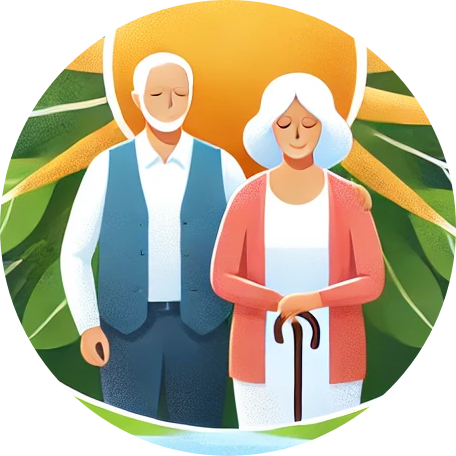
Understanding Lower Back Pain: Common Causes and Solutions
Lower back pain is a prevalent issue that many people, especially those in the middle-aged to senior demographic, experience. This discomfort can range from mild to severe and can be triggered by various factors, including poor posture, inactivity, or previous injuries. It's essential to understand the underlying causes to manage and alleviate this pain effectively. Factors such as weakened muscles and stiff joints make it increasingly vital to incorporate gentle movement and stretching into our daily routines.
In the video titled Unlock Your Lower Back in Seconds!, Dr. Mandell presents essential techniques for relieving back pain that prompted us to dive deeper into this critical topic.
Unlocking Your Lower Back: Quick Techniques for Relief
In the video titled Unlock Your Lower Back in Seconds!, Dr. Mandell discusses simple exercises that can help relieve tension in the lower back almost instantly. Techniques like gentle stretching and focused breathing exercises can significantly contribute to improved mobility. For seniors, maintaining flexibility is crucial, as it promotes better overall health and reduces the risk of falls.
The Importance of Movement: Incorporating Gentle Fitness
Physical activity plays a vital role in maintaining lower back health. Incorporating low-impact exercises such as yoga or tai chi can improve flexibility, strength, and balance, which are imperative as we age. These practices not only help in pain management but also promote relaxation, which is beneficial for mental wellness. Regular movement contributes to the release of endorphins, enhancing our mood and potentially alleviating anxiety, which often accompanies chronic pain.
The Connection Between Mental and Physical Health
Addressing lower back pain also means considering our mental wellness. Many seniors struggle with stress, anxiety, and depression, which can exacerbate physical discomfort. Engaging in mindfulness exercises, meditation, or even journaling can help clear the mind and promote emotional resilience. Understanding this connection helps in creating an effective holistic approach to health, ensuring that both mental and physical needs are met.
Creating a Calming Bedtime Routine
Quality sleep is crucial for healing and overall health—especially for seniors dealing with pain issues. Building a calming bedtime routine can significantly improve sleep patterns and mental clarity. Incorporating practices such as deep breathing, gentle bedtime yoga, or relaxation techniques before bed can help signal the body that it’s time to rest. Additionally, creating a peaceful bedroom environment further enhances the quality of sleep, helping to rejuvenate both the body and mind.
Herbal Remedies and Natural Supplements for Comfort
In exploring natural remedies for relaxation and health, many seniors turn to herbal solutions. Herbs like chamomile and lavender are known for their calming properties and can aid in sleep and anxiety relief. Additionally, certain supplements such as magnesium are effective for muscle relaxation and can be particularly beneficial for managing chronic pain. Understanding these options allows seniors to take a proactive role in their healthcare, effectively managing their conditions with minimal side effects.
Encouraging Social Connections for Mental Health
It's important to recognize that building social connections is invaluable for maintaining mental health, particularly among seniors. Engaging in community activities, joining support groups, or simply reaching out to friends can combat loneliness, which often affects sleep and mental wellness. Fostering these connections not only enriches life but contributes to a sense of belonging, which is crucial in navigating the challenges posed by aging.
In conclusion, addressing lower back pain and its associated mental health challenges requires a multifaceted approach. It involves incorporating gentle movement, understanding the connection between physical and mental health, and building an encouraging community around oneself. Take proactive steps towards enhancing your well-being, starting with simple exercises and self-care routines that can unlock a healthier, more vibrant life.
 Add Element
Add Element  Add Row
Add Row 




Write A Comment